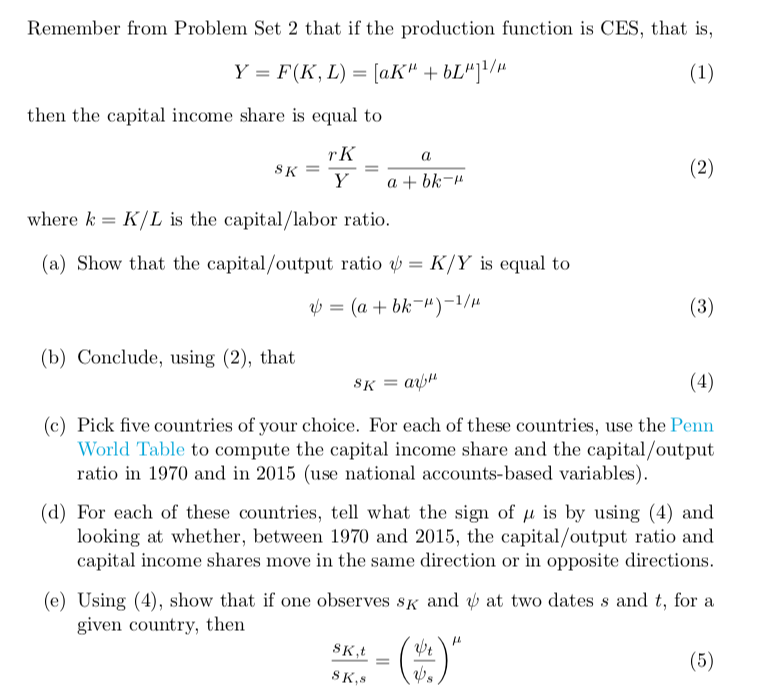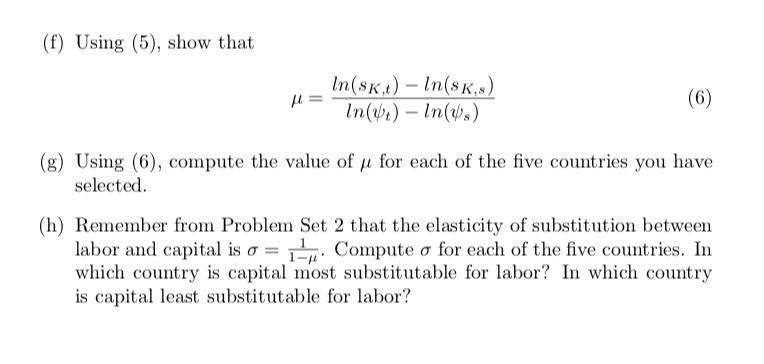

Remember from Problem Set 2 that if the production function is CES, that is, Y = F(K, L) = [aK +6L"]1/ (1) then the capital income share is equal to a SK TK Y (2) atbk-u where k = K/L is the capital/labor ratio. (a) Show that the capital/output ratio y = K/Y is equal to = (a + bk-)-1/ (3) (b) Conclude, using (2), that SK = (4) (c) Pick five countries of your choice. For each of these countries, use the Penn World Table to compute the capital income share and the capital/output ratio in 1970 and in 2015 (use national accounts-based variables). (d) For each of these countries, tell what the sign of u is by using (4) and looking at whether, between 1970 and 2015, the capital/output ratio and capital income shares move in the same direction or in opposite directions. (e) Using (4), show that if one observes sk and y at two dates s and t, for a given country, then us (5) SK, SK, (f) Using (5), show that In(sk,t) - In(SK) In(xt) - In(s) (6) (8) Using (6), compute the value of u for each of the five countries you have selected. (h) Remember from Problem Set 2 that the elasticity of substitution between labor and capital is o = 1-m. Compute o for each of the five countries. In which country is capital most substitutable for labor? In which country is capital least substitutable for labor? Remember from Problem Set 2 that if the production function is CES, that is, Y = F(K, L) = [aK +6L"]1/ (1) then the capital income share is equal to a SK TK Y (2) atbk-u where k = K/L is the capital/labor ratio. (a) Show that the capital/output ratio y = K/Y is equal to = (a + bk-)-1/ (3) (b) Conclude, using (2), that SK = (4) (c) Pick five countries of your choice. For each of these countries, use the Penn World Table to compute the capital income share and the capital/output ratio in 1970 and in 2015 (use national accounts-based variables). (d) For each of these countries, tell what the sign of u is by using (4) and looking at whether, between 1970 and 2015, the capital/output ratio and capital income shares move in the same direction or in opposite directions. (e) Using (4), show that if one observes sk and y at two dates s and t, for a given country, then us (5) SK, SK, (f) Using (5), show that In(sk,t) - In(SK) In(xt) - In(s) (6) (8) Using (6), compute the value of u for each of the five countries you have selected. (h) Remember from Problem Set 2 that the elasticity of substitution between labor and capital is o = 1-m. Compute o for each of the five countries. In which country is capital most substitutable for labor? In which country is capital least substitutable for labor








